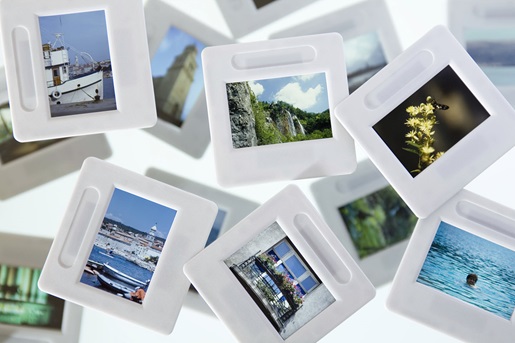Here’s how to scan a document to email as efficiently as possible.
Technology brings people closer together — even when they’re thousands of miles apart. Today, sending the grandparents a family portrait or mailing off important documentation can be done instantly, thanks to powerful tools such as email and digital scanners.
However, with numerous official solutions and third-party software options available, figuring out how to scan and email a document can appear trickier than it seems. We’ve compiled this guide to help users of all experience levels convert their physical documents into digital files and send them where they need to go using their email platform of choice.
Got something else that needs scanning? Check out our comprehensive guide, "How to Scan Just About Anything."
How to scan and email a document
If you’re wondering how to scan a document to a computer, the following steps will help you through the process:
- First, connect your scanner to your computer via a USB cable, ethernet or wirelessly over Wi-Fi. This process will be fairly similar across different makes and models, though you should consult the documentation included with your scanner or found on the manufacturer’s website.
- Once connected, you’ll find your scanner listed on the “Devices” menu on Windows, or “Printers & Scanners” menu on macOS.
- Next, you’ll want to configure the scan options. These can include:
- After configuring your scanner options to your liking, it’s time to initiate the scan. Click the “Scan” button in your computer software, or press the “Scan” button located on the device itself.
a. Image quality: The dpi setting stands for “dots per inch” and determines the quality of the resulting image. Higher values produce higher-quality scans but require more storage space than lower values. A good choice for most text-based documents is 300 dpi.
b. Color options: Many modern scanners can create digital copies in color or black and white. Color scans take longer to scan and consume more storage space than black-and-white scans. Choose the option that best fits your needs.
c. Output location: Your scanner’s software should allow you to designate where it stores the resulting files on your computer, regardless of whether it’s a Mac or Windows computer. By default, scanners will typically save to the “Pictures” folder on a Mac or “My Documents” and “My Scans” on Windows. You should double-check these pathways in your scanner’s preferences before digitizing a large number of documents.
d. Mobile scanning: Many scanners also support scanning to mobile devices, which is typically done via Bluetooth or an app. Check your scanner to determine which option it uses (if any), and download any relevant software.
Once you’ve learned how to scan a document to a computer, you’re ready to send it via email.
How to scan a document to email in Gmail
Gmail uses a drag-and-drop method for adding scanned documents to emails. All you need to do is select the document or documents you’d like to attach, then drag them to the body of your email. Documents will appear as an attachment, while photos will be embedded directly into the email’s body.
Alternatively, click the paper clip icon in the lower-left corner of the new email window, located to the right of the “Send” and “Formatting options” buttons. This will open a file browser where you can select images and documents to attach without adding anything to the email’s body. Notably, Gmail limits attachments to 25 Mb — anything larger will be uploaded to a Google Drive folder the recipient can access.
Drag-and-drop functionality isn’t available within the Gmail app. Instead, on mobile devices, begin by composing a new email. The paper clip icon will be in the top right corner of the app, allowing you to attach documents stored on your phone or Google Drive and attach them to your email.
Did You Know? The RICOH ScanSnap iX1300 can scan up to 30 pages per minute. Click here to learn more.
How to scan a document to email in Outlook and Hotmail
Outlook, which Hotmail email addresses also use, is similar to Gmail in that it supports drag and drop file attachments. The process of adding documents to an email without dragging and dropping is also similar, as the email provider has its own paper clip attachment button. For Outlook users, the button will be in the top left corner. From here, you can add a document from your computer or cloud locations like Microsoft OneDrive.
The Outlook mobile app has an easily navigable interface, with the attach button in the bottom left corner, just above the keyboard. Tap the paperclip icon to pull up options to attach files or photos, allowing you to add files that are locally stored or in the cloud.
Did You Know? PCMagazine described the RICOH ScanSnap iX1300 as a “...snappy, accurate portable document scanner that's excellent for digitizing documents on the road or wherever space is limited.” Click here to read the full review and learn why it earned an “excellent” 4.0 out of 5 rating.
How to scan a document to email with Apple Mail
Apple Mail works through an app that comes pre-loaded on Mac computers. Once you’ve opened the app and created a new email composition, a second window will appear where you’ll type out your message. On the top right corner of the new window, you’ll see an attachment icon — yet another paper clip, of course — next to the reply button. Click it, and a new pop-up window will open that allows you to attach documents.
Apple Mail’s mobile interface is a bit harder to navigate than the other major email apps because of its differing icons. To attach a file, long-press the body of the email, which will prompt a touch menu to appear and give you the option to select and format text. Press the right-facing arrow on the screen once, and you’ll see the option to insert a photo or video into your email. Press it twice, and you’ll see the option to attach a document.
Our recommendation: RICOH ScanSnap iX1300
Of course, before you can attach anything to an email, you have to be able to scan it. We know you have no shortage of options when it comes to choosing a home document scanner. We pride ourselves on having spent the last 50+ years designing and developing some of the most beloved electronics in the world, including our line of award-winning, easy-to-use, one-touch ScanSnap scanners.
The RICOH ScanSnap iX1300 is a reliable scanner fit for your day-to-day scanning needs. It’s also suited for all levels of technical savvy. Ricoh’s easy-to-use software allows you to scan documents directly to email, minimizing the fuss of wading through documents stored on your computer’s hard drive. Additionally, the iX1300’s small size and mobile connectivity allow you to scan in more places. Click here to learn more or shop the rest of our entire scanner line.
Note: Information and external links are provided for your convenience and for educational purposes only, and shall not be construed, or relied upon, as legal or financial advice. PFU America, Inc. makes no representations about the contents, features, or specifications on such third-party sites, software, and/or offerings (collectively “Third-Party Offerings”) and shall not be responsible for any loss or damage that may arise from your use of such Third-Party Offerings. Please consult with a licensed professional regarding your specific situation as regulations may be subject to change.













